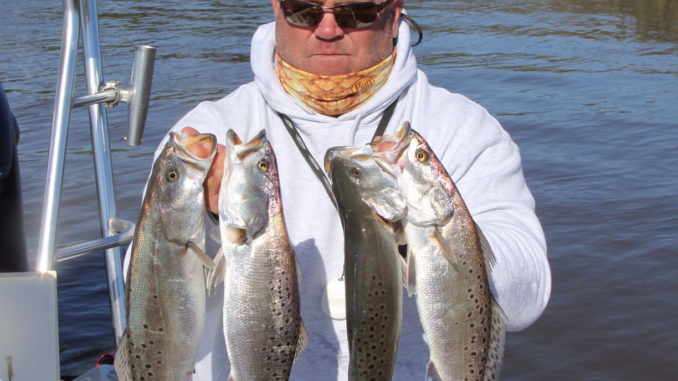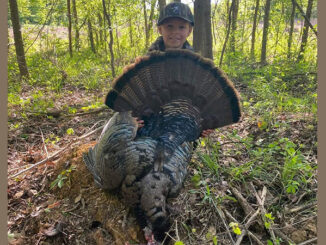
Winyah Bay, Cape Romain waters fill up with hungry specks in the fall
After months of hot, summer weather, the waiting is finally over, and anglers can celebrate the fall with excitement, and the waters surrounding Georgetown are some of the best places in South Carolina to slam a limit of speckled trout in record time.
For Rob Beglin of Inshore Xtreme Fishing Charter, it’s go time.
“We wait all year for it,” Beglin said. “The reds are fun, but when the trout are on a bite, there isn’t anything more exciting.”
Cool water and a seemingly endless supply of bait makes the trout action reach epic levels this time of year in the Georgetown area.
“It’s a combination of everything from a heavy presence of baitfish and a huge congregation of shrimp migrating out of the bays towards the ocean,” said Beglin (843-375-6366). “And not to mention, the water temperature is dropping every week, and these fish know what is fixing to happen. Everything will be gone in a couple months. They put the feed bag on, strapping it on from ear to ear.”
Even though Beglin lives in Pawleys Island, he will trailer to Winyah Bay in Georgetown or to the shallow waters of the Cape Romain National Wildlife Refuge. Both places are known as excellent shrimping grounds by the region’s recreational shrimp-baiters. Specifically, Muddy Bay in Winyah Bay and Cowpens in Cape Romain are ground zero for massive catches of huge shrimp during the October season, and speckled trout love shrimp more than anybody and anything.
“The shell banks in Winyah Bay separate Muddy Bay’s shrimp grounds from the river channel (and) that makes for a perfect ambush position for trout, and big trout, too,” Beglin said. “I typically catch bigger trout in Winyah Bay’s waters than anywhere else, but I catch bigger numbers in Cape Romain near the Cowpens area where the shrimping is also very good.”
All the bait and shrimp are packed up in the bays and are easily picked off by trout and other predators along main creeks near points and other typical ambush spots.
“I like oyster mounds, grass points and other ambush spots in places with clean, moving water,” he said. “And the jetties can be spectacular in Georgetown if it isn’t too rough.”
Beglin will use a wide variety of artificial lures, from Rat-L-Traps to artificial shrimp and other soft-plastic baits on 1/8-ounce jigheads. Trout like different types of forage and lots of it. And if he really wants to catch a big fish, he will go early when conditions are right and work a topwater bait.
“If I get a calm morning with a good high tide in the morning, I will go topwater because the bigger fish usually show up on top,” he said.
However, the cooling water and over-abundance of bait have the trout going to all levels to feed, from the top to the very bottom of the 15-foot or deeper channels. Beglin will fish shallow-running lures first and then drop down to deeper spots to see if a better bite or a bigger selection of fish is available.
“If I am catching smaller fish in the upper third of the water column, I will switch to deeper-running lures to see if the bigger fish are lying closer to the bottom. It can be a mind game, but I always fish all aspects of the column until I find what I am looking for,” he said.
After a long summer of mediocre fishing, the fall conditions have finally arrived, and speckled trout anglers can step up to the plate and soak up the fast and furious action long anticipated.




Be the first to comment